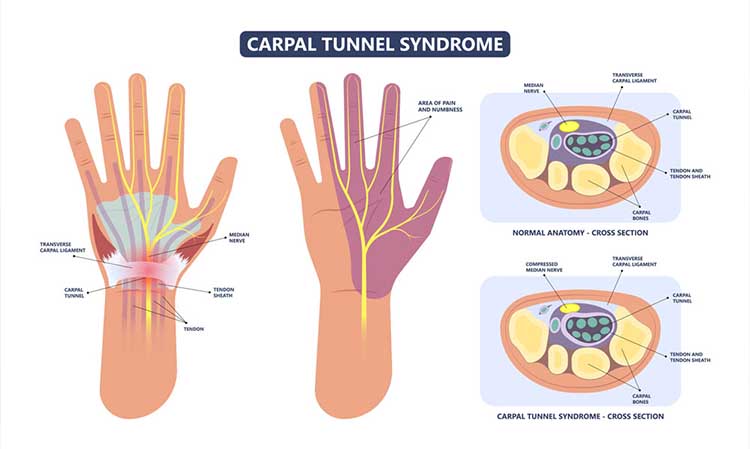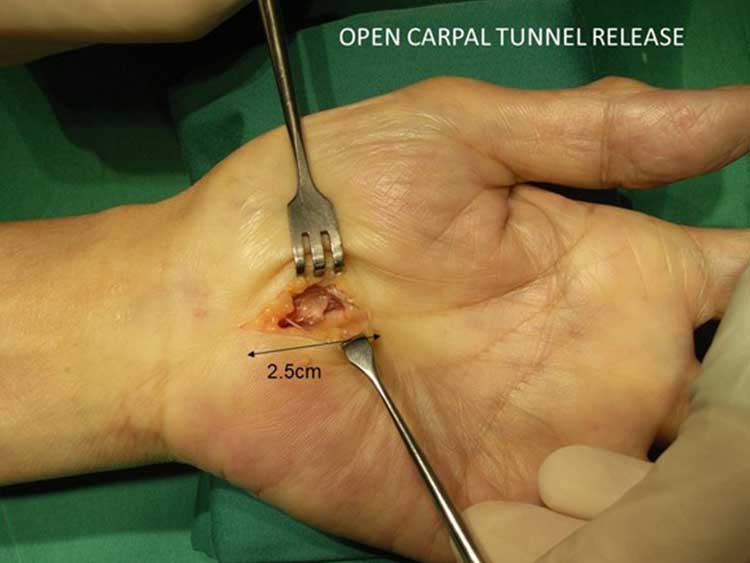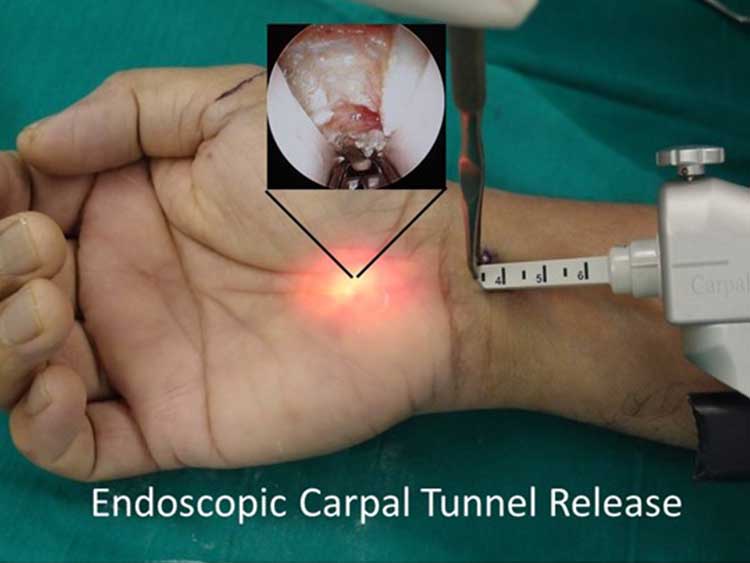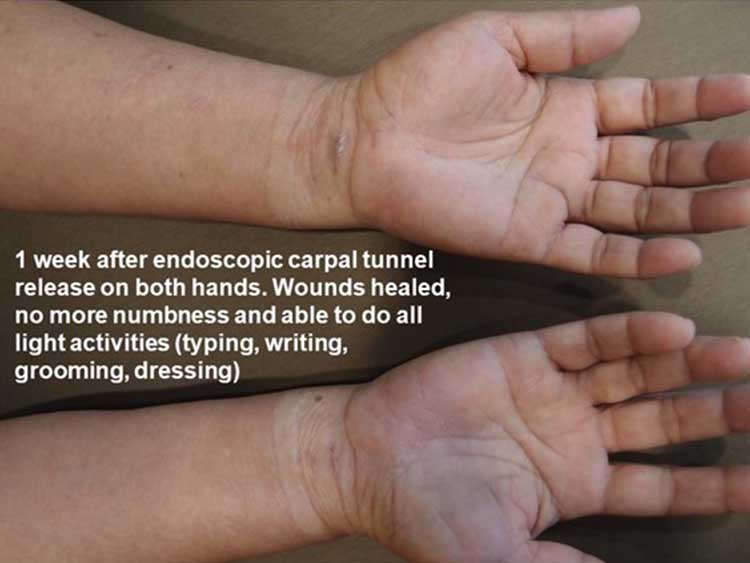
What is Carpal Tunnel Syndrome?
Carpal Tunnel Syndrome is the most common nerve constriction causing hand numbness. It occurs when excessive pressure is placed on the median nerve as it travels across the wrist into the hand. This nerve provides sensation to the hand and controls the thumb muscles. Along with the flexor tendons to the fingers, the nerve passes through a tunnel at the wrist, made up of wrist bones and a thick band of fibrous tissue on top.
Any increase in pressure within this space reduces blood flow to the median nerve, impacting its function and causing numbness, tingling, and burning pain in the hand. Out of every 1000 people, 3-5 will develop carpal tunnel syndrome in their lifetime.
Discover The Truth of Carpal Tunnel Syndrome
with Our Hand Specialist, Dr Andrew Yam
How Do I Know I Have it?
If you have hand numbness, tingling or burning pain in the thumb, index, middle or ring fingers you may have carpal tunnel syndrome. These symptoms usually are worse in the morning after waking up and may sometimes wake you up from sleep.
Gripping an object tightly, using a mobile phone or holding up a newspaper can also trigger these symptoms. Tingling, pain, and stiffness are worse when the hands are cold and better when warm. Shaking the hands vigorously usually relieves the symptoms. Over time, the ability to feel becomes worse. It may feel as if there is a layer between the skin and the object making it harder to feel it properly. The thumb muscles may become weak and waste away, resulting in difficulty performing simple tasks like doing up buttons or picking up coins.
It is important to see a hand surgeon to get the right diagnosis and hand numbness treatment if you have numbness or tingling in the hands. Your hand surgeon may order a nerve conduction study, ultrasound scan or MRI of the hand to help confirm the diagnosis.
Other nerve compressions can cause numbness or pain in the hands, such as cubital tunnel syndrome (ulnar nerve compression at the elbow) and pronator tunnel syndrome (median nerve compression in the forearm). These less common conditions may be misdiagnosed as carpal tunnel syndrome resulting in the wrong treatment.
When to See a Doctor or Hand Specialist?
If you have persistent signs and symptoms suggestive of carpal tunnel syndrome, especially if they interfere with your normal activities and sleep patterns, see your doctor. If you leave the condition untreated, nerve and muscle damage can occur.
What Causes Carpal Tunnel Syndrome?
 As we age, the pressure in the carpal tunnel increases due to thickening of the tendons from repeated daily use, leading to hand numbness. Other conditions such as wrist fractures, gout, or tumours may also increase the pressure in this tunnel.
As we age, the pressure in the carpal tunnel increases due to thickening of the tendons from repeated daily use, leading to hand numbness. Other conditions such as wrist fractures, gout, or tumours may also increase the pressure in this tunnel.
Carpal tunnel syndrome is also commonly associated with frequent repetitive work using the hands for long hours. Production line workers and homemakers, and those who work long hours at the computer keyboard with poor posture are at greater risk.
Pregnant women are also susceptible due to water retention. It is also more common among people with diabetes, renal failure, hypothyroidism, and rheumatoid arthritis.
How is Carpal Tunnel Syndrome Treated?
Conservative Treatment
Early or mild carpal tunnel syndrome can be treated by keeping the wrist in a brace especially when sleeping and avoiding postures and activities that increase the pressure around the nerve.
Treatments for Temporary Relief
- Non-steroidal anti-inflammatory medication
- High dose Vitamin B6
- Steroid injections around the nerve
- Special “nerve gliding” exercises done several times a day can help loosen the median nerve in the carpal tunnel
While conservative treatment is often effective for early and mild cases, it may not work if symptoms, like hand numbness, have been present for several months. In such cases, symptoms may recur after successful treatment.
If there’s no improvement after 2-3 months of conservative care or if symptoms keep recurring, surgery may be necessary. Talking to a specialist will help to ascertain the best treatment for the condition.





